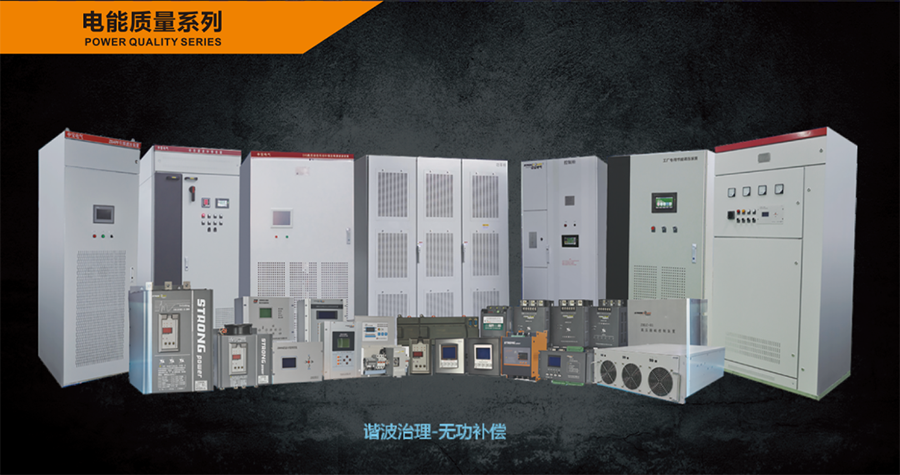Relation between capacitor reactive power compensation and voltage regulation
For power system quality metrics, voltage is one of the main indicators. The electrical equipment in the entire power system is designed and processed according to the rated voltage customized by the standard. This standard can ensure that the electric energy supplied to the user, and the variation range of the voltage fully conforms to the rated electric energy allowed by the corresponding electronic equipment. In the system, the degree of loss of reactive power itself is far greater than the degree of corresponding active power loss, so what we need to consider is how to construct and arrange compensation measures for reactive power The location of the power supply is set.
Compensation principle of reactive power
The compensation principle of reactive power is divided into five.
1. When making compensation, we should fully consider the close connection between the overall balance and the local balance.
2. When compensating, we should fully consider the close connection between centralized compensation and decentralized compensation, among which we should use decentralized compensation as the main basis.
3. When performing compensation, we must fully consider the close connection between high-voltage compensation and low-voltage compensation. Among them, we must use low-voltage compensation as the main basis.
4. When making compensation, we should fully consider the close combination between loss reduction and pressure regulation. Among them, we should take loss reduction as the main basis and take into account pressure regulation.
5. When performing compensation, it is necessary to fully consider the close connection between the reactive power compensation of the power supply department and the user compensation.
The method and characteristics of capacitor reactive power compensation
Low voltage individual compensation
This compensation method is to disperse one or many capacitors according to the reactive power demand of each individual energized equipment, and connect them in parallel with the power-consuming equipment so that he can use the same set with these power-consuming equipment The circuit breaker, and the simultaneous switching activities through the control and protection device and the motor. Its main advantage is that when the electrical equipment is working normally, the reactive power compensation will be put into operation, and when the electrical equipment stops running, the compensation equipment will automatically exit, which will not cause reactive power transfer. occur. The advantages of this method are a relatively small investment, small footprint, relatively convenient installation, convenient and flexible configuration, easy maintenance, and relatively low accident rate.
Low-voltage centralized compensation
This compensation method is to connect the low-voltage capacitor to the direction of the low-voltage bus of the distribution transformer through the corresponding low-voltage switch, and to protect and control it through the switching device of reactive power compensation, and then directly according to the low-voltage bus during operation. Directly control the reactive load on the system, and switch the capacitors. The switching method of this kind of capacitor is to operate the whole group, and the whole group advances and retreats at the same time, so it cannot be targeted for individual equipment. The main advantage of this method is that the wiring is very simple, relatively speaking, the workload of operation and maintenance is very small, and the reactive power can be processed and balanced on the spot. Its own loss has high economic value, and it is a common method used in reactive power compensation in our country.
High voltage centralized compensation
This compensation method is to directly act on the high-voltage bus between 6kv and 10kv in the substation to perform reactive power compensation with the capacitor bank connected in parallel. This method is very suitable for use when the user is far away from the substation or substation, or when the geographical location is very remote and at the end of the power supply line, and when the power user itself has a certain degree of high-voltage load, this method can reduce For the reactive power consumption of the power system itself, it will also have a certain compensation effect. The advantage of this method is that the compensation device can automatically perform corresponding switching activities according to its own load, and then reasonably and reasonably improve the user’s power factor, and then avoid the current power factor. Electricity bills go up. At the same time, this method is also very convenient for maintenance, and the corresponding compensation benefits are also high.
Reactive power compensation and voltage regulation
On the basis of the above technologies, in order to carry out real-time reactive power compensation activities and optimize the distribution of reactive power flow at the same time, a brand-new method can carry out reactive power compensation under the scope and implement control ideas for voltage optimization.
The first is the rules governing reactive power compensation and the corresponding voltage regulation. The primary goal is to ensure that the overall loss of the entire power grid is as low as possible, and at the same time ensure that the voltage of each node is qualified. Based on the above two points, the dispatch center also needs to become a control center, and the tap adjustment and switching of capacitors in the on-load tap changer of each surrounding substation can be changed into a control method.
Then there is the specific control process. First of all, we can collect and organize data from the dispatch automation system, and then these data will be sent to the voltage analysis module and the reactive power analysis module for corresponding comprehensive analysis so that the main variable of the substation can be formed Joint adjustment commands, substation capacitor switching commands, and other corresponding data and commands, and then these commands and data can be executed cyclically through the control systems of the dispatch center, centralized control center, and distribution center. While ensuring efficiency, it also improves accuracy.




